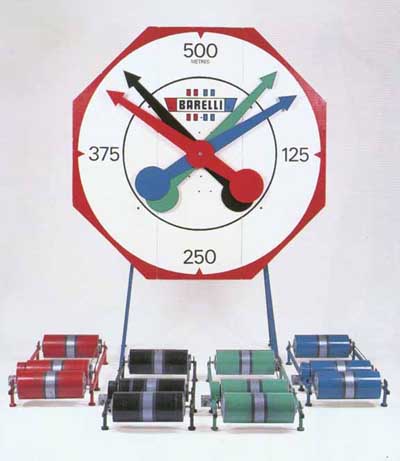 John Prolly
John Prolly wrote a pretty good piece for Urban Velo magazine about fixed gear freestyling,
here. John is one of the more public figures in the FIX/MX (or 700CMX) trend - using full-sized fixed gear bikes for
BMX-derived trick riding.
I've been impressed at how how skill throw-downs have evolved in the past few years. When I started racing alleycat races, side events featured track bike skid competitions. There was nothing cooler than a smoothly executed one-leg-over-the-handlebar, 360-degree skid, as a legion of sweaty bike kids clutching brown-bagged beers cheer on. But the a few people started to barspin and do wheelies, and all of a sudden there was another level of grace, coordination, and control on the bike.
And, in a just over two short years, it's booming. Companies are producing barspin-able bikes and beefy components made for slamming around. John himself is adamant that he doesn't ride a track bike - this is a different monster altogether. It's not a bike repossessed for a new purpose, like a track bike ridden on the street is. It's a fixed-gear trick bike - something tough, reliable, and, most importantly, ridable. It's a new kind of bike.
There's a lot of scorn for this field, as there always is for a developing niche. "Just get a BMX bike" kind of contrasts with the track-bike orthodoxy ("death before derailleurs!") that occasionally develops. But one of the things I admire about John is that he embraces the fact that it's not about track bikes. It's about riding and being able to ride to new places, and the fact that he's so willing to experiment with new pieces of gear - some of which are god-awfully ugly according to the conventional aesthetics - says that he's more interested in the function than the form. I mean, come on! Unicrown forks are hideous, 40 spoke wheels are ridiculous, 28mm wide tires are overkill for a 125-pound weakling like myself, who can't bunnyhop something higher than a curb. Riser bars... the list goes on. I hate all those bits and pieces. And yet they make perfect sense for these new bikes, and, well, that's okay. That's just fine. In fact, it's right-on. Exactly where it needs to be, with form following function.
Considering the way that cycling scenes tend to play out, abandoning form-first mentality means abandoning silly orthodoxies, more-authentic-than-thou idiocy, and general interdisciplinary trash-talking. John just likes to go ride his bike and do wacky shit on it. In collaboration with a couple companies and a bunch of other riders they've been identifying
parts and designs that can survive
this (ab)use. They're not perverting any old stock of riding history, they're creating a new one, and that's a lot of fun to watch. Not just because I've always been interested in the dynamics of temporal emergence (to borrow a term from my University days, but because some of the shit that they do on bikes is really cool.
BikesnobNYC can't stop giving John a hard time, but whatever. I like what John's doing, even if can't help but roll my eyes every time I see pictures posted on bikeforums featuring a super-short stem, riser bars reaching for the sky, and a 650 wheel in a fork meant for 700s... or, in other ways,
just using the wrong tool for the job. Some of this stuff makes for nonsense bikes but it doesn't mean that the whole discipline is nonsense.
I mean hey, BMX was an Olympic sport in 2008. Things change.
That's the
point.
I know I've got at least a couple readers who aren't quite so familiar with the city fixed gear scene, so, I welcome your reactions.
Here is a little bit more data for your research (youtube).








